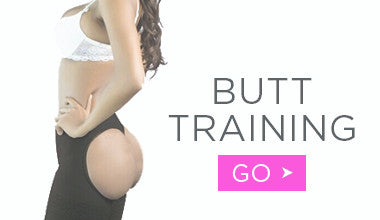
Everything You Need to Know About Strength Training
Nov 03, 17
Will Strength Training Leave Me Sore For Days?
Resistance or strength training interestingly is one of the most feared workouts. Just the sound of it makes you frightened, doesn’t it? You will be pleasantly surprised to know that it isn’t as tricky or as excruciating as it sounds. In reality, it is one of the best ways to not only get rid of excess weight but also keep it off permanently.
Yes, aerobics is good, but strength training helps increase your stamina. This means that the extra fat you have, all of it gets converted into muscle mass. Hence, you get a body that’s healthy, fit and lean.
Never strength trained before in your life? Here is all the information you need to start your own routine.
What does Strength Training do?
Strength training or resistance training is where you use weights or your own body weight to increase resistance by developing muscle mass. Kelly Drew, the exercise physiologist of the American College of Sports Medicine, says that you cannot keep weight off in the long-term if you don’t maintain lean muscle mass.
And this is precisely where strength training comes to your rescue. It creates lean muscle mass - the muscle that is obtained once the fat is burned off. The best part is that lean muscle is what helps in burning more calories.
The thing you need to understand is that if you are into hardcore diet routine and exercise programs, you don’t just shed off the pounds, you also lose muscle. And this can be bad. Losing muscle means you are losing strength from your body and making it vulnerable to injury.
What’s more, with age, muscle mass starts decreasing on its own, which is why older people are more prone to physical injuries of tendons, joints, and ligaments. With strength training, you can gain lean muscle mass and ensure that your body remains strong and healthy.
Other benefits of strength training include a reduction in the risk of arthritis and osteoporosis, increased bone density, lower injury risks, stronger muscles allowing more flexibility and strength for routine chores.
Some research has also come to the conclusion that resistance training helps in lowering blood sugar level and keeps the hormones balanced. This means a reduction in diseases like diabetes, thyroid issues, and PCOS.
The question now is, what are strength training exercises? And how can you incorporate them into your daily schedule?
Here are some simple answers.
Types of Strength Training Exercises
You will be surprised that lifting weights is not the only thing that is counted as strength training. The use of resistance bands, weight machines and routines like pull-ups, push-ups, leg squats, push-ups with wall support and crunches are also strength training exercises.
So if you have never before strength trained, what can you start? According to experts, you need to exercise at least 5 days a week for an hour. In this regime, you need to include 2 days of strength training per week to see improvement in your lean muscle development. Also keep in mind that the exercises you choose should work on your entire body, including upper body, abdomen, legs, back, and hips.
One more thing, you need to make sure that you work out a different set of muscles each day. When you are beginning to strength train, your muscles take time to heal, so be sure to give them proper rest. What’s more, you need to be very careful with strength training. Start small by opting for less number of repetitions or small weights like 2-3 pound weights and moving upwards as your body gains power.
The best way to strength train is at the gym. If you can’t have access to that, you can start training routine at home by following this alternate option.
- Core Strengthening Exercises: These include workouts like hanging knee raises, planks and reverse crunches
- Push Exercises: Overhead press, bench press, and dips are some push exercise routines
- Leg Exercises: These are a must to get a rounder butt and include squats, side lunges and/or deadlifts
- Pull Exercises: Pull-ups, Inverted rows, and chin ups
These four things are going to be perfect for you first-time practice. Just make sure you use weights that are suitable and do not strain your muscles too much. Remember, practice makes perfect!









